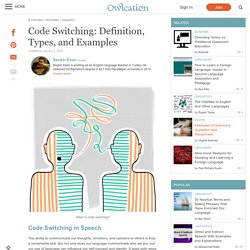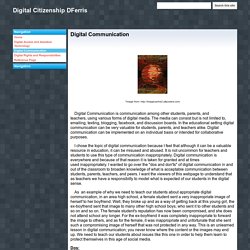

Learning Objectives. What is Digital Communication? (from NSU) YouTube. Civil Discourse 101 (YouTube) Federal Courts Teach Students Civil Discourse and Decision-Making (YouTube) Civil Discourse Online: A Conversation with Cameron Kasky (CommonSense.org) Civil Discourse Is a Skill We Can Learn to Practice (available via the KSU. Civil discourse is a skill we can learn to Columbus Dispatch The OH March 13 2019 p15B. Pre-read 2019: What is Digital Communication Doing to Civic Discourse? Published in the April 24, 2019 edition of the Princeton Alumni Weekly.

Last fall, I visited each of Princeton’s six residential colleges to discuss the 2018 Pre-read, Professor Keith Whittington’s Speak Freely: Why Universities Must Defend Free Speech. Amidst robust conversations filled with thoughtful comments, one student’s query struck me as especially revealing. She said that she had been persuaded by Whittington’s case for the importance of vigorous truthseeking argument at colleges and universities, and so wondered in retrospect why her high school discouraged discussion of controversial topics.
At first I thought her school might be unusual, but I quickly noticed other students nodding in accord. In an era when disagreement rapidly escalates to anger, too many schools and teachers have responded by shielding students from controversy. While I worry about the direction that some high schools are pursuing, I continue to be impressed by our students. That commitment is much needed. Rediscovering the art of conversation in digital discourse. “Think before you speak.”

“Choose your words carefully.” “Watch what you say.” It seems these once sage bits of advice are barreling toward extinction in today’s Tweet-first-think-second culture. Our news feeds are filled with bite-sized, sharp-tongued criticism and callous call-outs from various politicians, CEOs and even our closest friends. Not to mention more than a few brands.
But can we really blame them? Is it only the messengers and the messages that have changed, or is the medium also responsible? While so much of the current cultural cannon focuses on the new communication opportunities arising out of the digital transformation, there’s a gap in the conversation. Humble presentation of a personal viewpoint for consideration and discussion has been replaced with all-or-nothing, bold and provocative statements made by people and brands. Dissecting the disconnect should be driven by a desire to improve and impact change. Take the combat out of comms Consumers aren’t conquests. NICD research brief1 0. Civil Discourse in the Age of Social Media - Reynol Junco, Arthur W. Chickering, 2010. What is Code Switching? (YouTube) Flipping the Switch: Code-Switching from Text Speak to Standard English.
Code-Switching with the Language of Social Media. Recently, I spent a weekend seeing friends and family in San Diego.

I have a very diverse group of loved ones down there from multiple cultures and age groups. Without thinking, I was automatically switching between English, Spanish and Mandarin when speaking with different people. Are There Internet Dialects? How to Choose the Right Communications Channel. Internal communications teams must opt for the channel that best serves their given purpose and audience.

This article has been updated from a post originally published on May 4, 2016 by CEB, now Gartner. Internal communications teams are tasked with conveying all kinds of messages, but they don’t always pick the most effective channel to do so. Too often, these teams fall into the trap of trying to get an important message out quickly rather than taking time to consider how it fits into their overall communication strategy. “If there has been a senior leadership change, for example, it can be all too easy to think, ‘I’ll just write a quick post on the intranet,’” says Iliyana Hadjistoyanova, senior research analyst at Gartner.
“Instead, comms should be asking, ‘How do I make sure employees are informed in the right way and feel equipped to deal with this leadership change?’” How to pick the most effective communication channels at work. What do comedy and effective communication in the workplace have in common?

It’s all in the delivery—ba-duh-bum. But with more ways than ever to get your messages to the masses—or the individual—figuring out which communication channels will work best can feel overwhelming. Is it ever OK to text your manager? Should you email or direct message your coworker a quick question? And does anyone talk on the phone anymore? A nonpartisan center for advocacy, research and policy.
The Cost of Code Switching. Code Switching: Definition, Types, and Examples. The teacher can use code switching to help promote learning, especially while teaching new vocabulary.

Here are some suggestions for teachers of intermediate level students learning English. These examples set the lesson in a classroom of native Turkish speakers, but you could do something like this in any classroom full of students who share any native tongue. Activity #1: The teacher shares a written dialogue which includes an English statement for which the students don’t know the Turkish meaning. Teaching Digital Communication to All Students. Code-switching in Computer-mediated communication. Digital Communication - Digital Citizenship DFerris. *Image from: Digital Communication is communication among other students, parents, and teachers, using various forms of digital media.

The media can consist but is not limited to, emailing, texting, blogging, facebook, and discussion boards. In the educational setting digital communication can be very valuable for students, parents, and teachers alike. Communication - Digital Citizenship. Digital Communication: the electronic exchange of information Essential Questions What are the proper ways to use communication technologies such as e-mail, cell phone, and instant messaging?
